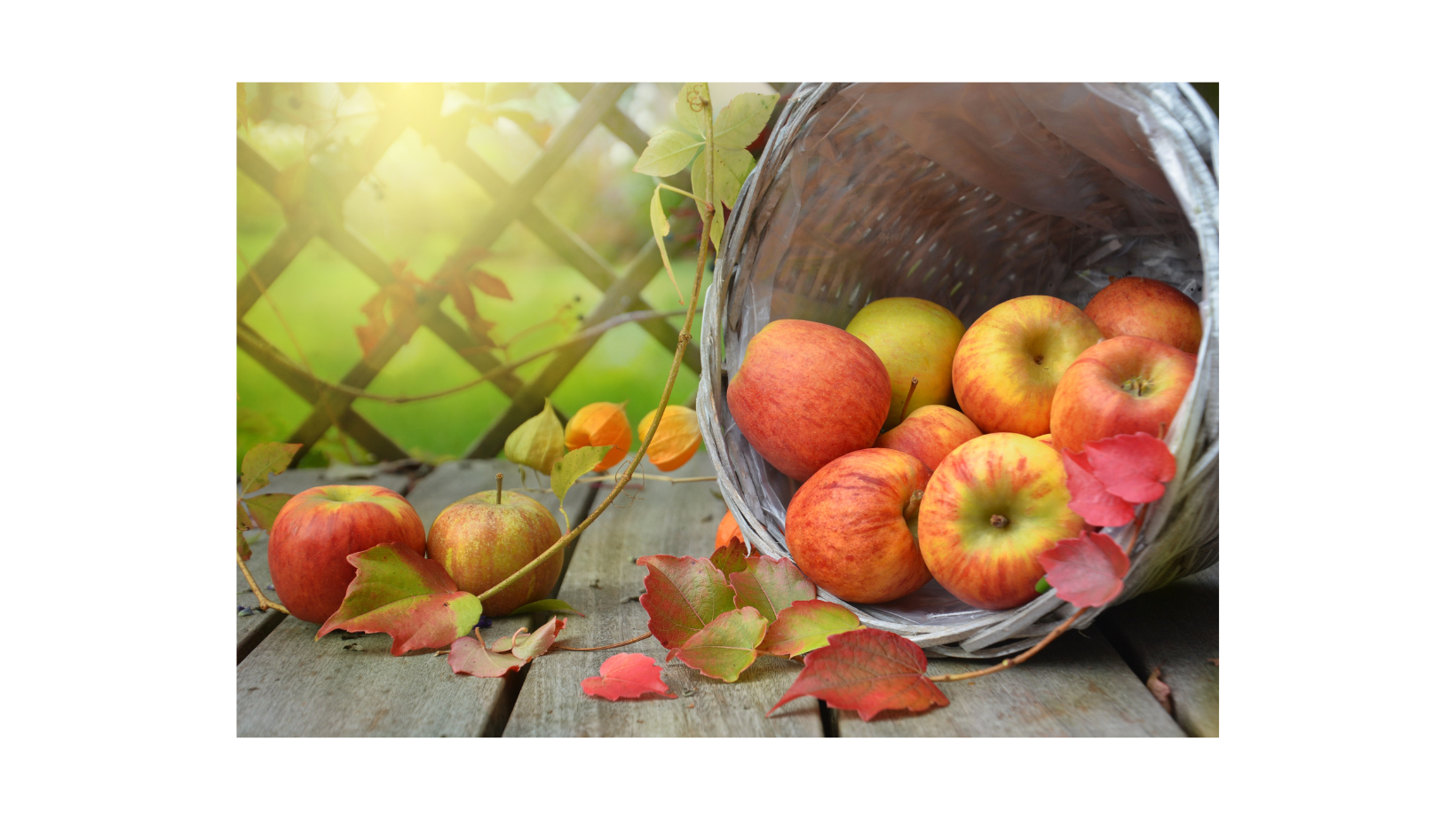Ready to Crunch for National Apple Month?
go.ncsu.edu/readext?962992
en Español / em Português
El inglés es el idioma de control de esta página. En la medida en que haya algún conflicto entre la traducción al inglés y la traducción, el inglés prevalece.
Al hacer clic en el enlace de traducción se activa un servicio de traducción gratuito para convertir la página al español. Al igual que con cualquier traducción por Internet, la conversión no es sensible al contexto y puede que no traduzca el texto en su significado original. NC State Extension no garantiza la exactitud del texto traducido. Por favor, tenga en cuenta que algunas aplicaciones y/o servicios pueden no funcionar como se espera cuando se traducen.
Português
Inglês é o idioma de controle desta página. Na medida que haja algum conflito entre o texto original em Inglês e a tradução, o Inglês prevalece.
Ao clicar no link de tradução, um serviço gratuito de tradução será ativado para converter a página para o Português. Como em qualquer tradução pela internet, a conversão não é sensivel ao contexto e pode não ocorrer a tradução para o significado orginal. O serviço de Extensão da Carolina do Norte (NC State Extension) não garante a exatidão do texto traduzido. Por favor, observe que algumas funções ou serviços podem não funcionar como esperado após a tradução.
English
English is the controlling language of this page. To the extent there is any conflict between the English text and the translation, English controls.
Clicking on the translation link activates a free translation service to convert the page to Spanish. As with any Internet translation, the conversion is not context-sensitive and may not translate the text to its original meaning. NC State Extension does not guarantee the accuracy of the translated text. Please note that some applications and/or services may not function as expected when translated.
Collapse ▲October is National Apple month! Check out this great article from Nebraska Extension’s Nutrition Specialist, Lisa Franzen-Castle, RD, PhD.
Apples are one of the most popular fruits in the United States (US). Thirty-six states grow apples commercially. October is National Apple Month, the only national, generic apple promotion in the United States. Originally founded in 1904 as National Apple Week, it was expanded to the entire month of October. Apples come in all shades of red, green and yellow. Apple varieties range in size from a little bigger than a cherry, to as large as a grapefruit. Check out the following information on apple facts and how to eat them in safe and delicious ways.
Eating apples in safe and delicious ways:
Apple Varieties & Uses
There are about 2,500 varieties grown in the US. Golden Delicious, Red Delicious, Fuji and Granny Smith are typically available year-round. Apples are great as a snack or cut up in a fresh salad. Many varieties are great for making cooked products. Apples used in baking include Braeburn, Gala, Granny Smith, Golden Delicious, Honeycrisp, and Honey Gold. Apples used in pies include Golden Delicious, Braeburn, Jonagold, Jonathan, and Granny Smith.
Apple Nutrition Facts
Apples are fat, cholesterol, and sodium free and a good source of fiber (soluble and insoluble) and vitamin C. It’s a good idea to eat apples with their skin. Almost half of the vitamin C content is just underneath the skin. Eating the skin also increases insoluble fiber content. One medium 2-1/2 inch apple, fresh, raw, and with skin has approximately 81 calories. Nutritional value will vary depending on variety and size.
Preparing and Serving Produce Safely
According to the Food and Drug Administration (FDA), you should wash raw fruits and vegetables very well before you peel, cut, eat or cook with them. Wash your hands with hot soapy water before and after preparing food. Do not wash produce with soaps or detergents; this may leave residue on produce that is not safe to consume. Use clean potable cold water to wash items. After washing, dry with a clean paper towel. This can remove more bacteria. Don’t forget that homegrown, farmers market, and grocery store fruits and vegetables should all be well washed.
Prevent Cut Fruit From Turning Brown
Keep cut fruits, such as apples, from turning brown by coating them with an acidic juice such as lemon, orange or pineapple juice. Or use a commercial antidarkening preparation with fruits, such as FruitFresh®, and follow the manufacturer’s directions. Another method to prevent browning is to mix them with acidic fruits like oranges, tangerines, grapefruit and other citrus fruit or pineapple. Prepare the acidic fruit(s) first. Then, cut the other fruits, mixing them with in the acidic fruit(s) as you prepare them.
For more food, nutrition and health information go to the Nebraska Extension UNL Food Website or visit the Sampson County Center website.




